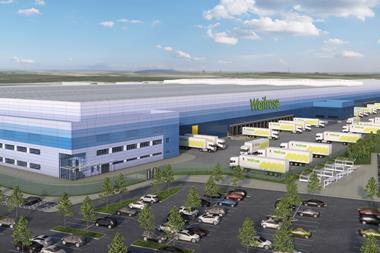UK and US consumers “will be ok” no matter what Brexit brings or how Donald Trump’s policies influence global trade. It was a point that drew consensus during a discussion on the future of European logistics, moderated by IPE Real Assets editor Richard Lowe at Expo Real in Munich.
“Consumers in the UK will continue to drive demand for e-commerce, grocery delivery,” said Justin Hildebrandt, managing director for European development at USAA Realco.
“Logistics investments in the US will also be fine as it has a huge domestic consumer impact.”
Hildebrandt – who moved from the US to Europe in 2016 to oversee USAA’s European investment programme – even sees the region benefitting from any growth in protectionism in the US. “Europe could pick up trade from Asia, etcetera,” he said.
Pierre-David Baylac, European logistics fund manager at CBRE Global Investors, pointed out this is already happening. “Europe is currently attracting capital and gains more traction with Asian capital as the political uncertainty we had a year ago has gone away,” he said.
Hans Vrensen, head of research and strategy for Europe at AEW, said: “We see a lot of demand for logistics properties to be strongly driven by e-commerce.”
Vrensen showed how research by AEW reveals a considerable gap between UK and other European countries when it comes to this form of trade. The data shows that the proportion of e-commerce of wider retail trade is highest in the UK and keeps growing, but countries like Germany, France or Spain are catching up fast.
Overall, Vrensen gave the European logistics market a clean bill of health. “The vacancy rates are quite modest and pipeline as percentage of stock is quite modest – this shows there is discipline in the market,” he said.
Even in areas where construction is more speculative, assets are mostly pre-let before the property is finished, Vrensen stressed.
Hildebrandt agreed that European logistic markets “are in check” and noted: “The amount it takes to get land is good, keeps the market healthy.”
But Baylac pointed out that some areas in Europe had a “real, real lack” of assets for geographical or administrative reasons.
He also mentioned that they can be altered quickly. “When Amazon announces to rent somewhere, municipalities are often quick to change their zoning plans,” he said. “What is true today might not be true in a few years.”
Baylac also pointed out a “paradox” in the market regarding prime rents. “For the first time in my career I am seeing no real prime rent on new buildings,” he said. “This means there is a limit to rental growth as tenants can get lower rents by committing for longer.”
What has become more important to tenants is flexibility to adapt properties, Hildebrandt said.
Vrensen noted: “In the past, we were good with ignoring the obsolescence of our buildings.”
For Baylac technology is “much more influential than trade” when it comes to logistics markets. “We cannot tell what the full scope of change will be,” he said.
For example, he said, locations of warehouses were currently driven by labour force. “But if this is at least partly replaced by robots this can change a customer’s decision on their supply chain.”
Hildebrandt sees even more disruptive change ahead. “Our customers do not necessarily love being in warehouses and they have innovative ideas as far as delivery goes,” he said. “But they might still use stores to present their goods.”
He added: “We don’t always know what is coming, but location helps to mitigate some of that risk. We can innovate as much as our tenants and this calculated risk is sometimes worth the try.”














